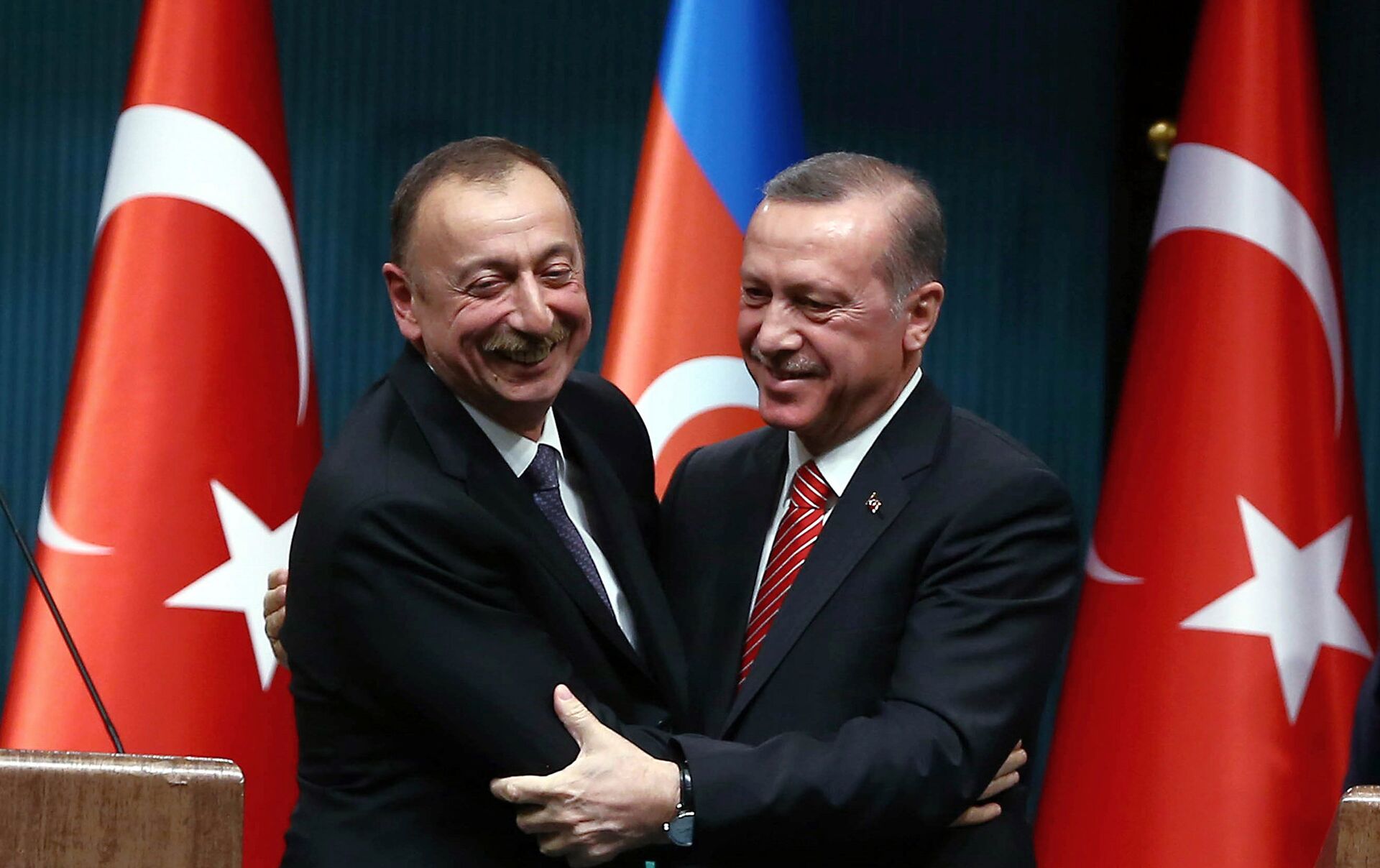Armenia and Azerbaijan - what next?
How will the Armenian-Azerbaijani relations develop in the coming months – amid the meeting of the leaders of Armenia and Azerbaijan with the participation of Russian president in Sochi on November 26, and the upcoming EU-brokered meeting in Brussels scheduled for December 15.
In a much-anticipated resumption of diplomacy, Russian President Vladimir Putin hosted a “mini-summit” meeting in Sochi on 26 November between Armenian Prime Minister Nikol Pashinyan and Azerbaijani President Ilham Aliyev.
The meeting was focused on two main issues, the planned “unblocking” or restoration of trade and transport links and the need for a border demarcation process. Each of these two issues remain outstanding and unfulfilled elements of the Russian-imposed ceasefire of November 2020, along with Azerbaijan’s failure to return a substantial number of Armenians prisoners (POWs) and other non-combatants.
- Baku residents discuss when a conflict can be considered resolved
- “People want to get to know each other”: what Armenians and Azerbaijanis discuss in Caucasian Crossroads Facebook group
- Closed railway of my childhood and the Armenian-Azerbaijani conflict
Significance of the Sochi Summit
The 26 November meeting in Sochi was significant several reasons, in terms of both what the meeting represents as well as what it does not.
Firstly, the meeting between the Armenian and Azerbaijani leaders offered an essential return to diplomacy over force of arms.
The second significant aspect of the Sochi meeting was the value for Russian President Putin in convening the “mini-summit” prior to the 15 December Brussels meeting, which was organized first by the European Union. In this context, Putin sought to preempt the EU and used Sochi to reassert Russia’s role as the dominant actor in the South Caucasus. Yet this does not exclude Western engagement. Rather, the return of the OSCE Minsk Group offers Moscow a rare endowment of legitimacy for their unilateral deployment of peacekeepers to Nagorno Karabakh.
The third important detail in the significance of this Sochi meeting stems from what it was not. This was an exercise in diplomatic engagement focusing on verbal commitments, and there was never any expectation for the signing of any document. This is part of a longer and more complex process, although the meeting in itself was a success, especially after recent attacks by Azerbaijan and due to the return of two Armenian POWs, freed from captivity by the Azerbaijani side.
What Comes Next
In this context of a seeming climbdown by Azerbaijan, with a reluctant yet important resumption of diplomacy, there are two main expectations in the coming months.
Firstly, largely driven by pronounced Russian frustration, there is a justified expectation for a coming agreement on the implementation of the first stage of the restoration of road and railway links from Azerbaijan to its exclave Nakhichevan. This is of particular importance to Azerbaijan, both as an important post-war victory and as a fulfillment of the most important component of the larger plan for restoring regional trade and transport.
But it is also very important to Russia, especially in the wake of the failed Russian attempt to convene an online meeting between the Armenian and Azerbaijani leaders to endorse this new breakthrough agreement that was to be timed with the anniversary of the 2020 Russian-imposed ceasefire. Although this issue was on the agenda for the Sochi meeting, more details are expected to be discussed at the next meeting, set for Brussels on 15 December on the sidelines of the European Union’s Eastern Partnership Summit.
The second expectation to come soon centers on the issue of border demarcation.
While the “unblocking” of road and rail links to Nakhichevan are more of a propriety for Azerbaijan, border demarcation is a critical priority for Armenia.
More specifically, this expectation consists of two likely scenarios or options: the formation of a trilateral “working group” empowered to negotiate the delineation and demarcation of the Armenian-Azerbaijan border, or instead, the incorporation of this work into the existing working group on trade and transport.
Regardless of the precise model, either option would provide an essential legal and institutional framework for border demarcation, thereby contributing to a critical de-escalation of addressing border disputes by force and through armed incursion, as Azerbaijan has done since May 2021.
Broader Context
Finally, both the Sochi and Brussels meetings are part of a broader context, with Azerbaijan following a post-war strategy comprised of three specific elements.
First, from the refusal to release Armenian prisoners of war (POWs) and non-combatants from captivity to its May 2021 military incursions into Armenian territory, Azerbaijan has adopted a relatively successful “transactional” approach designed to extract as many concessions from Armenia as possible.
In this way, the constant and consistent application of pressure on Armenia not only seeks to weaken the Armenian government, but also to strengthen its position both diplomatically and militarily. And using the POWs as diplomatic currency and as a political commodity, Baku is only likely to continue to rely on incremental partial prisoner releases over a long and drawn-out timeframe.
The second element of this new Azerbaijani post-war strategy is rooted in an ambitious and rather bold move to challenge Russia, openly defying Moscow by refusing to implement the terms of the Russian-imposed ceasefire of November 2020.
This has been matched by a potentially dangerous and reckless pattern of attacks along the Armenian-Azerbaijani border that undermines the planned expansion of the Russian military presence in southern Armenia and along the border, while also exposing the operational impotence of security guarantees from both Russia and the Collective Security Treaty Organization (CSTO).
The third component of this strategy stems from internal considerations of domestic Azerbaijani politics, based on the reality that for the longer-term survival of the Aliyev regime, the “victory” of the war for Nagorno Karabakh in 2020 was neither clear nor convincing enough. Moreover, the military outcome of the war did not force the “settlement” of the Karabakh conflict and for Azerbaijan, the war failed to deliver a total victory.
In fact, without the political utility of using the Karabakh conflict to justify the lack of democratic reform and to distract from the entrenched corruption of the Aliyev family, there is a looming and lingering challenge to the stability of Azerbaijan and to the security of the Azerbaijani leadership.
Thus, the border tension and attacks offer Aliyev with an important short-term way to continue to bolster his popularity and to prolong a “state of war” with Armenia (and Karabakh) that provides critical political dividends. Yet this is a limited short-term strategy that is unsustainable for the Aliyev government, especially in the face of dangerously high expectations and demands for a more convincing and complete victory.
Trajectories is a media project that tells stories of people whose lives have been impacted by conflicts in the South Caucasus. We work with authors and editors from across the South Caucasus and do not support any one side in any conflict. The publications on this page are solely the responsibility of the authors. In the majority of cases, toponyms are those used in the author’s society. The project is implemented by GoGroup Media and International Alert and is funded by the European Union




















